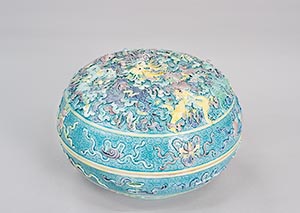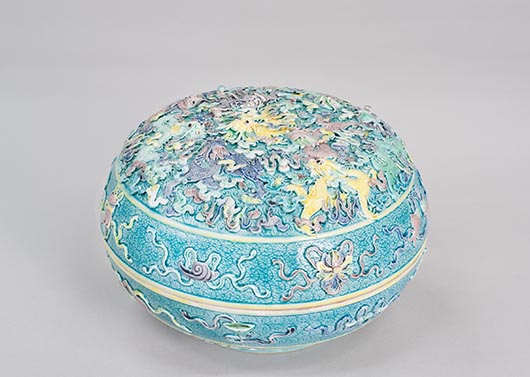
PITTSBURGH – Carnegie Museum of Art has undertaken collections research and evaluation in anticipation of the reinstallation of its Asian and African galleries in August 2015.
To that end, curators and conservators have examined and assessed works from these collections, forging a new direction for the galleries to showcase newly discovered strengths in Chinese ceramics; Buddhist and Hindu sculpture from South and Southeast Asia; and African art, including masks and decorative objects. The spaces currently housing these collections will be renovated and the works reinstalled in 2015, with three galleries addressing these areas of distinction. This renovation will complement and extend the recent reinstallations in the Sarah Mellon Scaife wing.
Over the past four years the CMOA decorative arts and design department consulted with more than a dozen specialists to identify the strengths of the Asian and African art holdings and the most important works and areas of concentration to go on view.
Throughout this process, staff have unearthed dozens of noteworthy objects that have been in storage for decades, and will be displayed once again. The Chinese art installation, which will replace the gallery currently containing Asian, Ancient and Egyptian art before 1300, stretches from the Neolithic period through the Qing dynasty (circa 2500 BCE–1800 CE). Expanding the focus to include art after 1300 will allow CMOA to incorporate superb overglaze enamels from the Qing dynasty, including an exquisite hand-painted enamel bowl with roundels of butterflies from the Yongzheng period and a bizarre googly-eyed dragon bowl from the Qianlong period. Other objects include a ritual bronze from the Western Zhou period, a Gupta period Buddha head, and a gilded bronze Thai Buddha head. Exciting developments in the conservation lab include conserving a Bamana Boli figure and cleaning a cinnabar lacquer panel from the Qianlong period.
As with previous evaluation efforts, the museum identifies not only collection strengths, but also objects that are no longer an appropriate fit, whether it be due to poor quality, condition issues or redundancy. Such objects are deaccessioned and sold at public auction, per museum policy, and in accordance with guidelines set approved by the Association of Art Museum Directors and the Association of Art Museums. Proceeds from these sales go directly into funds benefiting future departmental acquisitions. CMOA is committed to acquiring, conserving and presenting works of the highest artistic caliber, those that resonate with the stories told by other great works in the galleries.
Recent research on European paintings in storage has yielded surprising discoveries, as well as big questions. The museum’s exhibition Faked, Forgotten, Found: Five Renaissance Paintings Investigated showcases suspected fakes in the collection which turned out to be authentic works by Old Masters, as well as the conservation methods that uncovered them. The ongoing process of responsible evaluation and deaccessioning yields remarkable revelations and creates new opportunities to connect visitors with CMOA’s stunning holdings, in this case, of Asian and African art.
For more information about Carnegie Museum of Art, one of the four Carnegie Museums of Pittsburgh, call 412.622.3131 or visit our website at www.cmoa.org
ADDITIONAL IMAGE OF NOTE



